SDG 13 - Climate Action


implementation of paperless transaction, paper recycling and banning of single-use plastics
water pipes replaced
and conserved water through high efficiency water fixtures
trees planted in 2021 by students, faculty and staff
protected native fruiting trees in the BINHI Conservation Center, Institute for Climate Change and Environmental Management
number of CLSU courses related to sustainability, management and development of the environment
kilowatt-hours of renewable electricity produced from solar energy
residential homes powered by renewable sources of energy
2021 projects dedicated to environmental management and climate change mitigation
metric tons of greenhouse gas avoided from stationary fuels by using Biogas Digester
Purchased Electricity
Residential
Transportation
Total Energy Used
Low Carbon Energy Sources
The university’s energy usage is more or less 8,508 GJ on 2021. Purchased electricity has the highest energy usage with 3,341 GJ CO2e followed by the residential emissions with equivalent energy usage of 2,620 GJ and the transportation sector amounting to 263 GJ of energy. The university has taken actions to reduce the emission prior to 2022 by shifting a lot of its old equipment to environment-friendly and energy efficient equipment ranging from light bulbs to air conditioner to refrigerator. Additionally, the University have tree planting activity as a clearance for graduating students. Each student will plant a native tree species around the university; it is symbolic yet helpful for the reduction of GHG emission. The researchers in CLSU created a low-cost biogas digester which can replace the LPG tanks. Hopefully, in the future, a lot of biofuels like biodiesel will be created in order to shift from the high emission fuel to low emission fuel in order to lessen both stationary combustion and mobile combustion.
Energized of the Solar Panels will help the university to take down the emission. There are 8 sites where the solar panels are attached and these panels can produce 977 KW. E-bikes and bicycles must be promote to be the primary mode of transportation.

CENTRAL LUZON STATE UNIVERSITY
Average Annual Carbon Footprint per Individual 2021

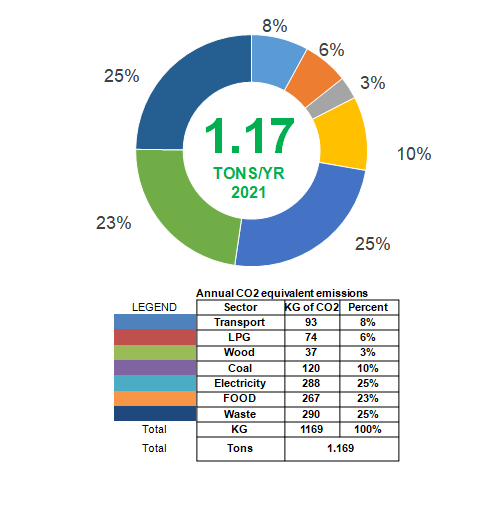
HOUSEHOLD EMISSIONS
The annual carbon footprint of Residents in Central Luzon State University was projected based on the accumulated data from household heads. Sectors identified were the Transport Sector, Stationary Fuel (LPG, Wood, Coal), Energy (Electricity), Food and Waste. Based on the results, the top three contributors of emissions per sector were the Energy Sector (25%), Food Consumption (23%) and Waste Generated (25%). Everyone has emissions and every activity generate a carbon footprint and everyone is responsible for conducting the inventory and accounting. The more we are aware of what we do, the more accurate we can target for reduction and the more alternatives we can do that can help us adapt to or mitigate the GHG emissions.
STRATEGIES FOR ACHIEVING NEUTRALITY
REDUCTION

RENEWABLE ENERGY

OFFSETTING
BIOGAS DIGESTER

Equivalent Energy
We save the equivalent of:

driven by an average gasoline-powered vehicle.

of gasoline consumed.

of diesel consumed

of coal burned

LPG tank for cooking
SOLAR ENERGY
SOLAR ENERGY
CO2 AVOIDED
We save the equivalent of:

driven by an average gasoline-powered vehicle.

of gasoline consumed.

of diesel consumed

of coal burned

Clean energy
PLEDGE OF COMMITMENT
The University is sincere in achieving carbon neutrality in order to fight climate change. The University pledges to achieve carbon neutrality in 2030 by making these targets possible. As a renowned higher education and research institution, CLSU will make great efforts to combat the climate change.
CARBON NEUTRALITY
Climate change refers to a statistically significant disparity in either the mean state of the climate or in its variability, persisting for an extended period of time which usually decades or longer. Climate change may be due to natural internal processes or external forcing, or to tenacious anthropogenic changes in the composition of the atmosphere or in land use (IPCC). Human activity worsen and fasten the effects of climate change.
Greenhouse gases are transparent to definite wavelengths of the sun’s radiant energy, allowing them to enter deep into the atmosphere or all the way into the Earth’s surface. Greenhouse gases and clouds inhibit some of infrared radiation from escaping, trapping the heat near the Earth’s surface where it warms the lower atmosphere. Alteration of this natural barrier of atmospheric gases can elevate or lower the mean global temperature of the Earth (NASA). Greenhouse gas helps our world to regulate the temperature but due to the drastic amount of GHG present in our world, it becomes unbalanced and it results in the birth of climate change.
Climate change mitigation denotes to efforts to cut or avoid emission of greenhouse gases. New technologies and renewable energies, making older equipment more energy efficient, or varying management practices or consumer behavior can mean mitigation (UN). Human activities are the main problem of GHG emission but also the human efforts will be the key to mitigate the emissions.
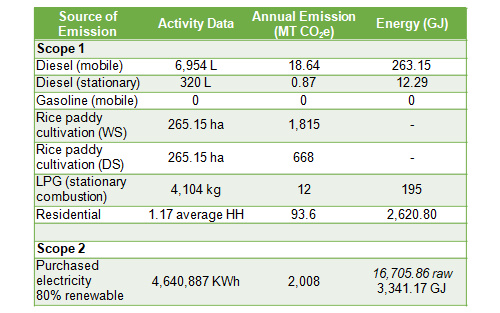
STRATEGIES FOR ACHIEVING NEUTRALITY
REDUCTION

RENEWABLE ENERGY

AWARENESS
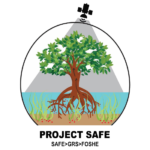
Enhancement of the system for Agriculture and Fisheries Education through the integration of Green and Remote Sensing Technologies Towards Food Security, Sustainability, Health and Safety of the Environment (SAFE>GRS>FOSHE)

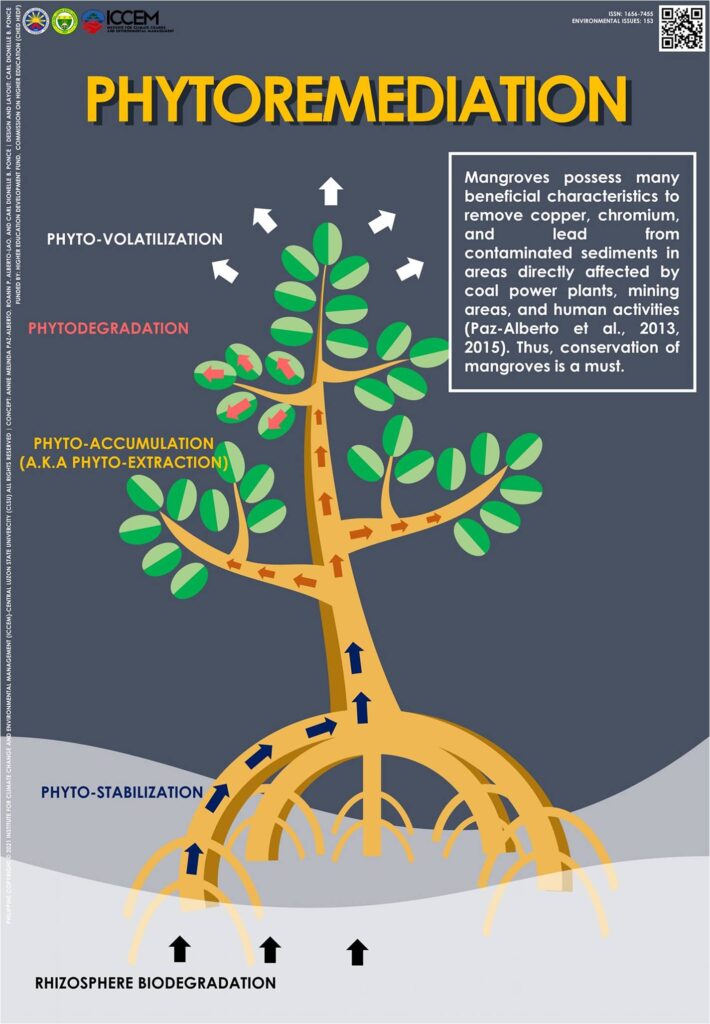
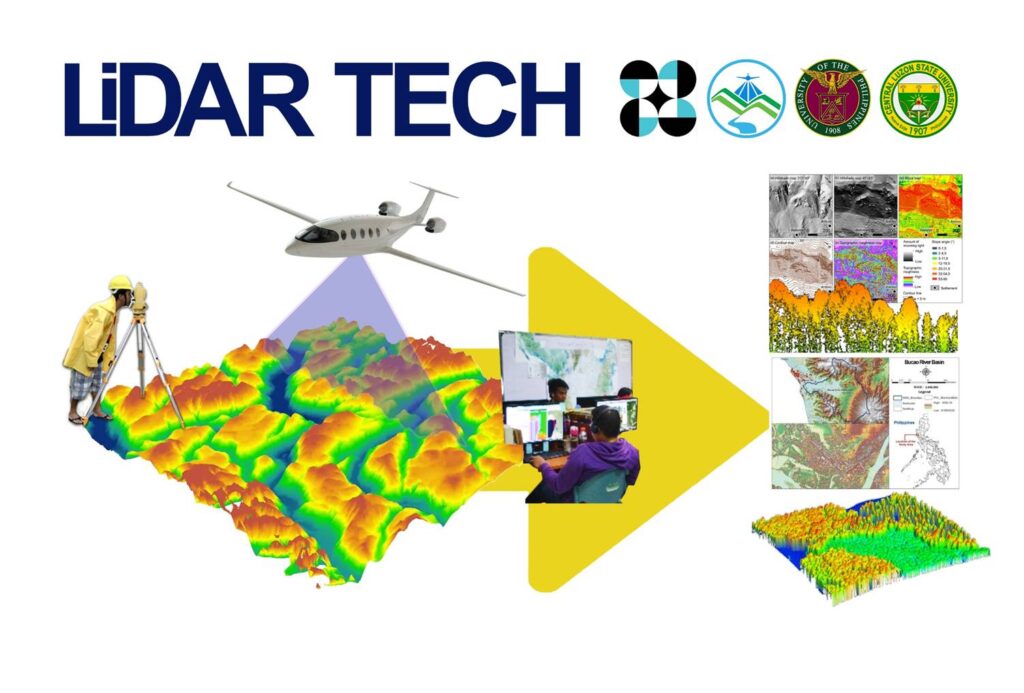


Formulation of the Local Climate Change Action Plan (LCCAP)
Spearheading the formulation of the Local Climate Change Action Plan (LCCAP):

